Classic Head Large Cent
1808 to 1814
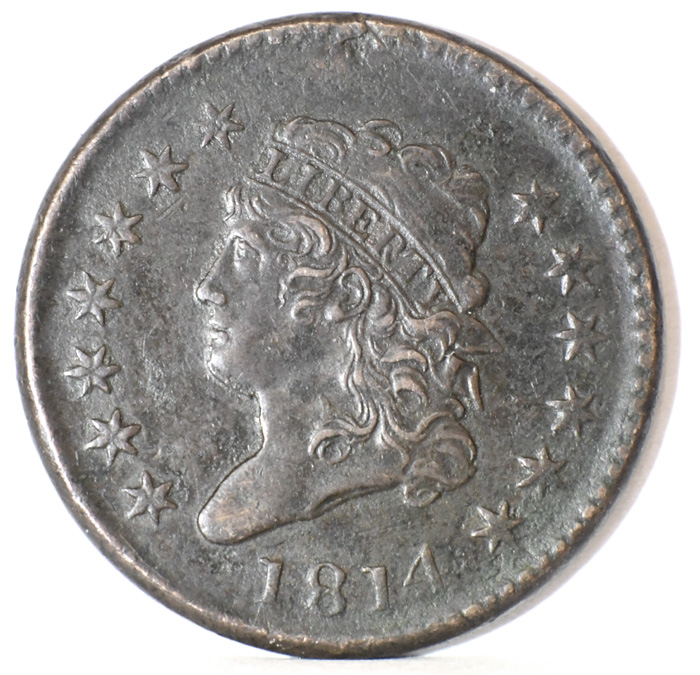 |
Also called the Turban Head, this design was introduced in 1808 and lasted with minor variations until 1814, when the production of large cents was temporarily halted due to a copper shortage which was caused by the war of 1812. All of these coins in XF or better condition cost at least $2000 or more. | 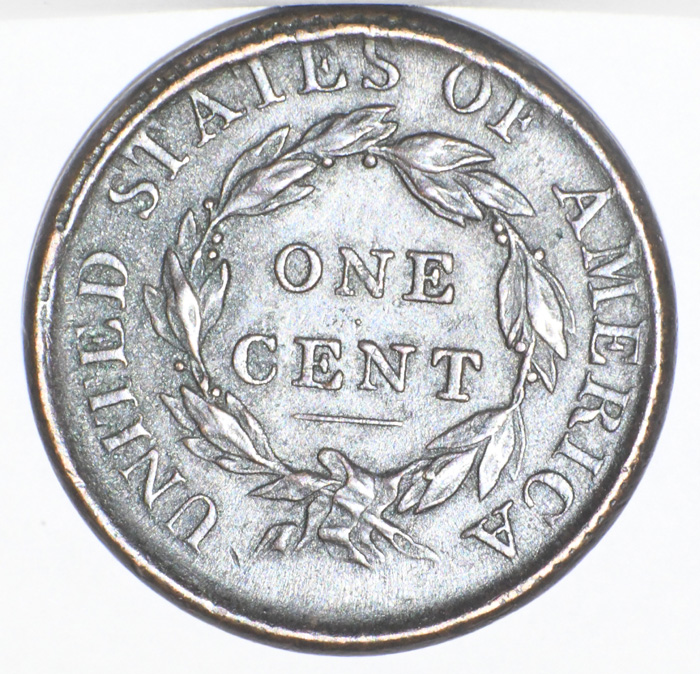 |
| This is a recent addition to the Classic Head large cent; It is the best example I have in my collection. | This is the reverse of the coin at left. |
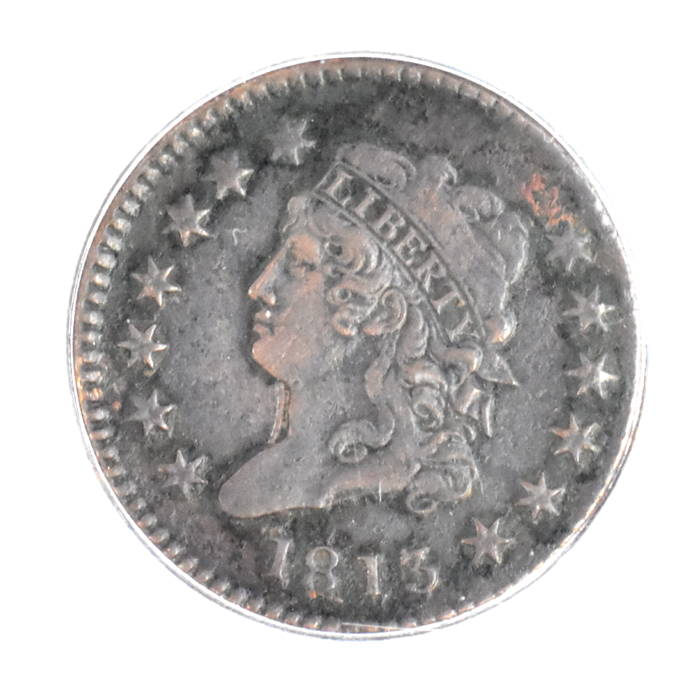 |
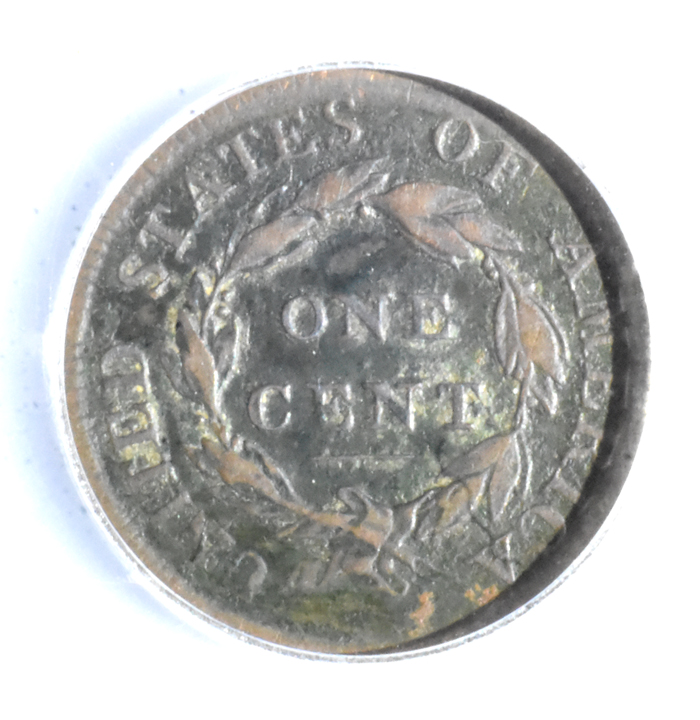 |
|
| I bought this coin because it was the only one I could find at this time that was not already slabbed and was in a decent grade for its age. It was expensive because there were a number of other collectors bidding on it but I wanted it so I paid the necessary price. I have now sent it to be certified and slabbed and it came back graded F 30. Only 418,000 of these were minted that year and not many high grade examples survive. | This is the reverse of the coin at left. I was sorely tempted to clean the coin to reveal its actual copper surface but the value of the coin changed my mind. Without the corrosion and tooling damage it would retail for about $1800 and even PCGS lists its undamaged value at $1300. Although the grading company did not say so, it appears to me that the coin was cleaned at some point.. | |
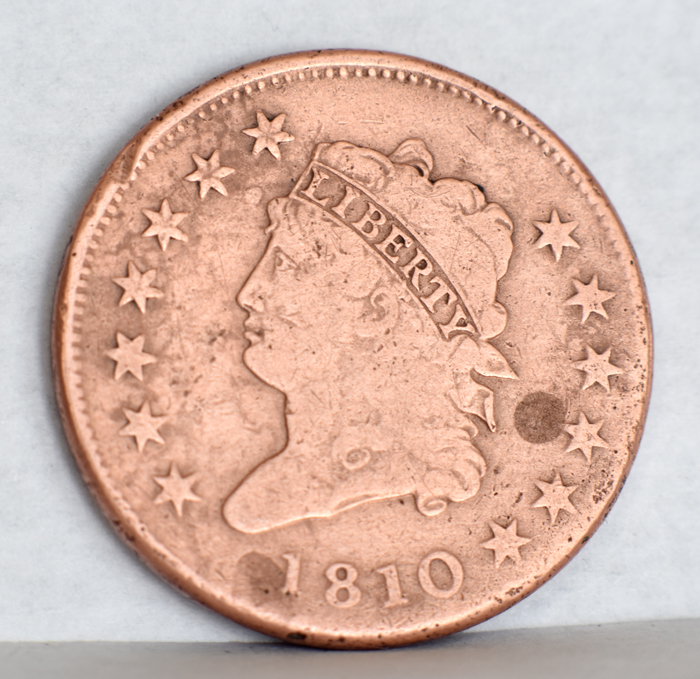 |
 |
|
| This coin was bought for cleaning to show the actual appearance of these one cent coins at this time in the history of our country. It cost me $250 and likely is worth that although the cleaning will undoubtedly degrade this amount. I do not know what caused the blue color on the coin below but at least the detail in the image is very good. | This is the reverse of the coin at left. It shows a bit more detail but has more dirt on the surface. Nearly a million and a half were made this year. | |
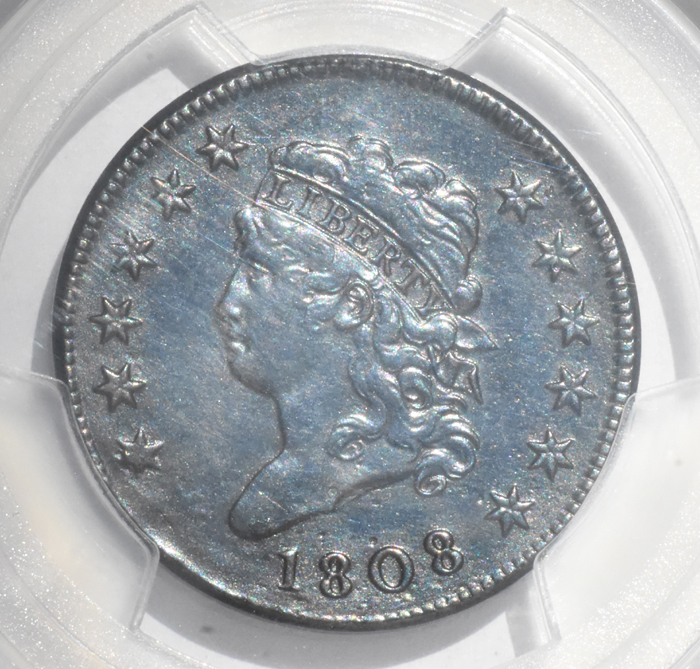 |
A | 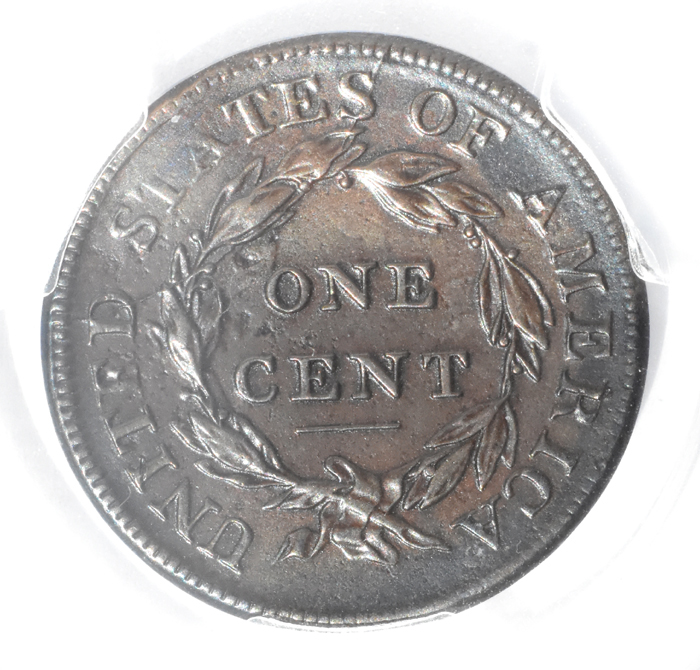 |
| This coin is certified and mounted in a plastic slab, stored separately from the U. S. Types album. It was certified to be in XF condition except that the coin was repaired at some point previously, which lowered its value considerably. The vendor who sold me the coin rated its lowered value as equal to a grade of VF which would be $800 although he sold it for $500. Without the repair, the coin would value at about $2500 because the copper used in these coins was quite impure, was softer than pure copper or the copper alloy that is used in modern times, and consequently these coins suffered rapid wear during circulation. Thus, this issue is rare and hard to find in the better grades. | This is the reverse side of the coin at left. It shows more imperfections than the obverse and likely was subjected to more of the repair that was done during restoration. Only 1,007,000 of these coins were minted that year. |
| 1808: January 1: Act Prohibiting Importation of Slaves (1807) comes into effect: The importation of slaves into the United States is banned; this is also the earliest day under the United States Constitution that an amendment can be made restricting slavery. February 6: The ship Topaz (from Boston April 5, 1807, hunting seals) rediscovers the Pitcairn Islands; only one HMS Bounty mutineer is found alive, Alexander Smith (John Adams). February 11: Anthracite coal is first burned as fuel by Jesse Fell in Wilkes-Barre, Pennsylvania; the discovery leads to the use of coal as the key fuel source of America's industrial revolution. Born on June 3: Jefferson Davis, President of the Confederate States from 1861 to 1865 and U.S. Senator from Mississippi from 1847 to 1851 and from 1857 to 1861 (died 1889). Born on November 1: John Taylor, 3rd President of The Church of Jesus Christ of Latter-day Saints (died 1887). |